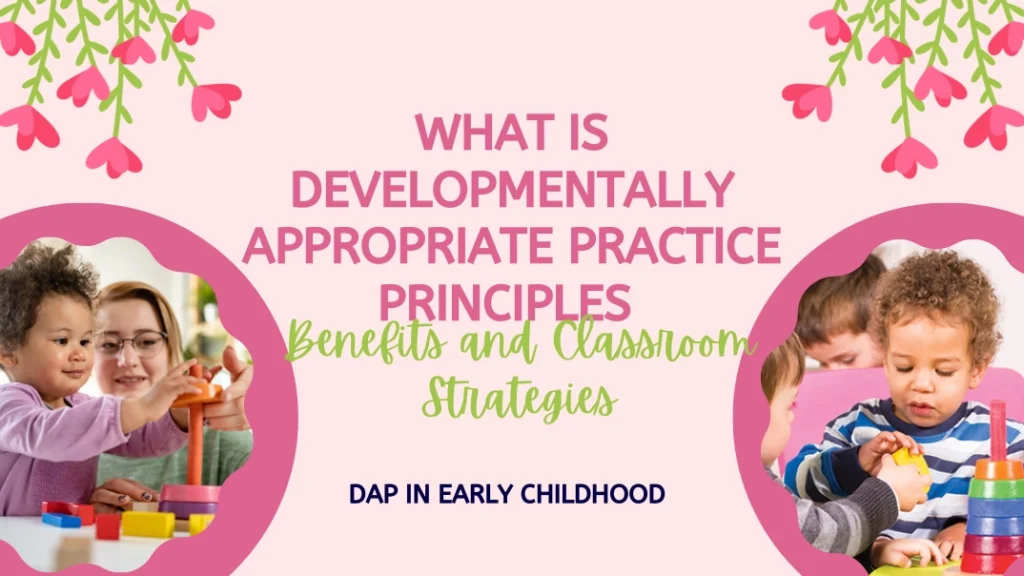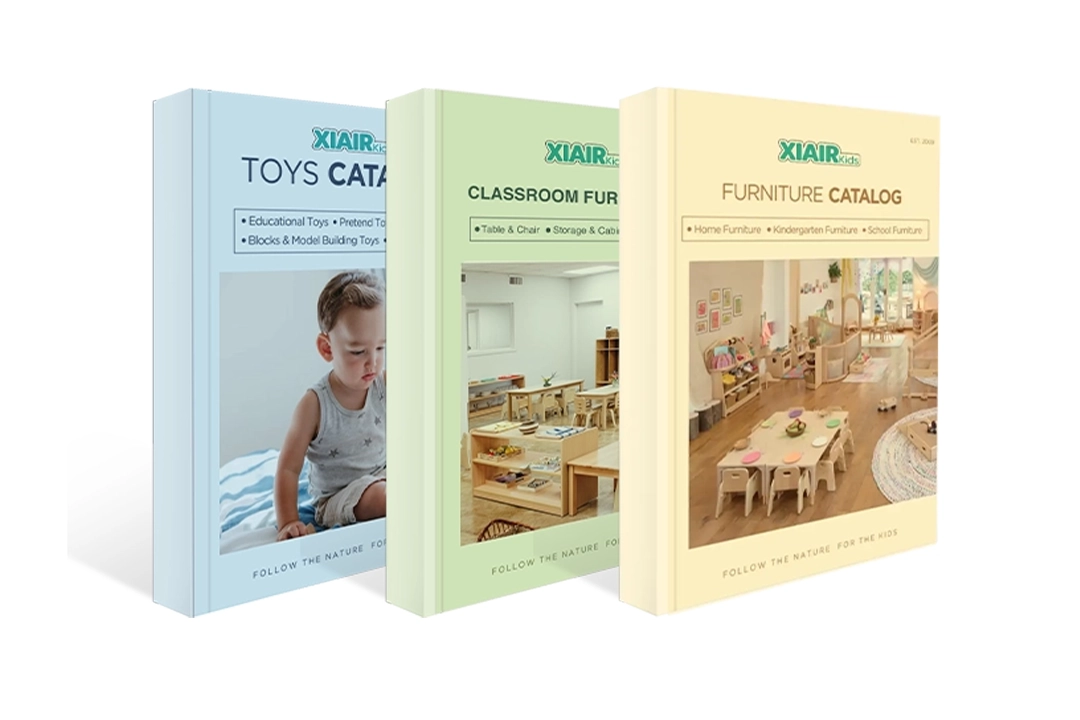Introduzione
Ogni bambino impara in modo diverso, ma molte classi seguono un approccio standardizzato. Alcune lezioni sono troppo veloci, lasciando i bambini confusi e frustrati. Altre sono troppo facili, causando noia e disimpegno. Quando le attività di apprendimento non sono adatte allo stadio di sviluppo di un bambino, possono causare stress, mancanza di fiducia e persino avversione all'apprendimento. Gli insegnanti possono sentirsi sotto pressione per raggiungere gli standard accademici, mentre i genitori si preoccupano se il loro bambino sia davvero pronto per il futuro.
Un'aula di scuola materna in cui alcuni bambini sono pronti a scrivere frasi mentre altri stanno ancora imparando a tenere una matita. Un insegnante potrebbe sentirsi indeciso: dovrebbe incoraggiare gli studenti più lenti o frenare quelli più avanzati? Se le lezioni sono troppo impegnative, i bambini potrebbero sentirsi ansiosi e fare fatica a tenere il passo. Perdono opportunità di crescita ed esplorazione di nuove competenze se sono troppo semplici. Questo squilibrio può influire sul successo scolastico e sullo sviluppo emotivo e sociale del bambino.
È qui che entra in gioco la Pratica Appropriata allo Sviluppo (DAP). La DAP è un approccio didattico basato sulla ricerca che aiuta gli educatori a progettare lezioni adatte all'età, alle capacità e agli stili di apprendimento dei bambini. Invece di un insegnamento rigido, la DAP si concentra su esperienze pratiche, esplorazione e gioco, rendendo l'apprendimento divertente ed efficace. Se utilizzato correttamente, il DAP crea un ambiente coinvolgente e di supporto in cui i bambini acquisiscono fiducia in se stessi, sviluppano competenze al proprio ritmo e si divertono sinceramente ad imparare.
Questo articolo esplorerà le Pratiche Appropriate allo Sviluppo, perché sono essenziali e come insegnanti e genitori possono utilizzarle per supportare l'apprendimento dei bambini. Che siate educatori, caregiver o genitori, comprendere le Pratiche Appropriate allo Sviluppo vi aiuterà a creare la migliore esperienza di apprendimento per i bambini piccoli.
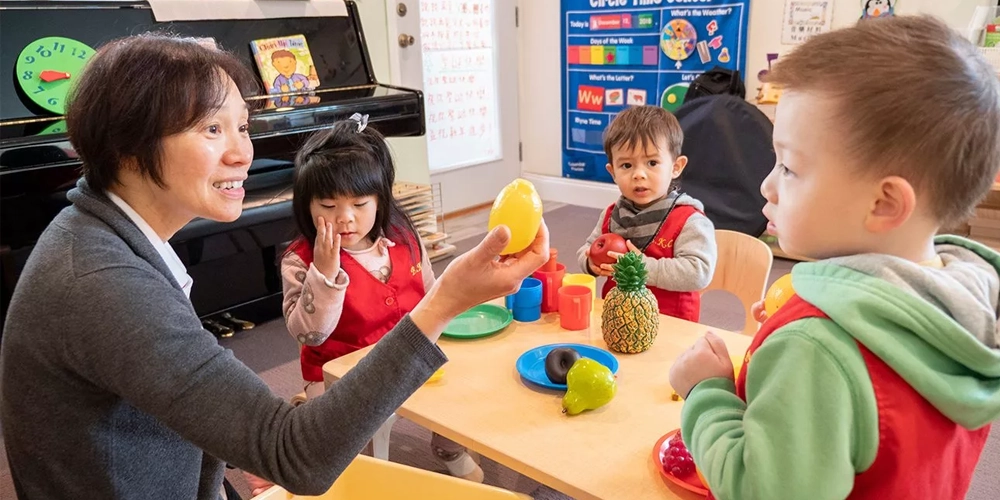
Che cosa si intende per pratica appropriata allo sviluppo?
Definizione e significato di DAP
Le pratiche appropriate allo sviluppo sono un approccio all'insegnamento basato sul modo in cui i bambini piccoli sviluppano e apprendono nelle diverse fasi. Si riferiscono a metodi di insegnamento che tengono conto di ciò che è adatto all'età del bambino, alle sue esigenze individuali e al suo stile di apprendimento. Comprendere le pratiche appropriate allo sviluppo aiuta gli educatori a creare un ambiente in cui i bambini possano esplorare, giocare e sviluppare naturalmente le competenze essenziali.
Il significato di una pratica appropriata allo sviluppo va oltre il semplice adattamento dei piani di lezione. Le pratiche appropriate allo sviluppo derivano da decisioni educative basate sulla ricerca sullo sviluppo infantile e sulle migliori pratiche didattiche. Quando gli insegnanti applicano pratiche appropriate allo sviluppo nei programmi per la prima infanzia, garantiscono che i bambini ricevano esperienze che li supportino crescita cognitiva, emotiva e fisica piuttosto che forzare i giovani studenti a rispettare rigide aspettative accademiche.
Storia e origini Chi ha creato DAP
Chi ha creato pratiche appropriate allo sviluppo? Associazione nazionale per l'educazione dei bambini (NAEYC) ha introdotto il concetto di pratiche appropriate allo sviluppo nell'educazione della prima infanzia nel 1986. Le pratiche appropriate allo sviluppo sono state progettate per aiutare gli insegnanti a comprendere come i bambini apprendono meglio e per guidarli nel prendere decisioni appropriate all'età in merito all'insegnamento e al curriculum.
Esperti dello sviluppo infantile come Jean Piaget, Lev Vygotsky ed ERik Erikson ha influenzato i principi di pratica appropriati allo sviluppo. Queste teorie sottolineano l'importanza del gioco, dell'esplorazione e dell'interazione sociale come aspetti chiave dell'apprendimento precoce. Il gioco e le pratiche appropriate allo sviluppo sono profondamente interconnessi perché il gioco permette ai bambini di sperimentare, risolvere problemi e sviluppare competenze essenziali per la vita. Le pratiche appropriate allo sviluppo nell'alfabetizzazione linguistica e nella matematica aiutano inoltre i bambini a sviluppare solide capacità comunicative e di problem-solving fin dalla tenera età.
Perché è importante una pratica appropriata allo sviluppo
Una pratica didattica appropriata in classe garantisce che i bambini ricevano esperienze di apprendimento coerenti con il loro stadio di sviluppo, anziché aspettarsi che tutti i bambini raggiungano le stesse tappe contemporaneamente. Gli insegnanti che utilizzano pratiche DAP appropriate creano lezioni che bilanciano struttura e flessibilità, consentendo ai bambini di crescere al proprio ritmo.
Uno dei vantaggi più significativi di una pratica appropriata allo sviluppo è che supporta lo sviluppo olistico del bambino, anziché concentrarsi solo sugli aspetti accademici. L'implementazione di linee guida per una pratica appropriata allo sviluppo aiuta i bambini a sviluppare intelligenza emotiva, creatività e abilità sociali, oltre alle materie tradizionali.
L'utilizzo di attività pratiche appropriate allo sviluppo aiuta i bambini a rimanere coinvolti e motivati negli ambienti di apprendimento. Alcuni esempi includono l'apprendimento pratico, il lavoro di gruppo collaborativo e la narrazione interattiva. Le attività pratiche appropriate allo sviluppo per i neonati potrebbero includere il gioco sensoriale, mentre le attività pratiche appropriate allo sviluppo in età prescolare potrebbero consistere in gioco libero strutturato ed esplorazione guidata. Analogamente, le attività pratiche appropriate allo sviluppo si concentrano sui bambini della scuola materna, spesso includendo giochi di problem-solving ed esercizi di alfabetizzazione precoce.
Comprendere le basi di pratiche appropriate allo sviluppo aiuta anche genitori e tutori a prendere decisioni consapevoli sull'educazione dei propri figli. I genitori che collaborano con gli insegnanti nell'implementazione di strategie di pratiche appropriate allo sviluppo a casa possono rafforzare ulteriormente lo sviluppo dei propri figli.
Seguendo principi di pratica appropriati allo sviluppo e concentrandosi su un apprendimento appropriato all'età, gli educatori possono garantire che i bambini sviluppino sicurezza, curiosità e un amore per l'apprendimento che duri tutta la vita.


Principi fondamentali della pratica appropriata allo sviluppo
I 12 principi della pratica appropriata allo sviluppo
I 12 principi di pratica appropriata allo sviluppo forniscono un quadro di riferimento basato sulla ricerca per un insegnamento efficace nell'educazione della prima infanzia. Questi principi aiutano gli educatori a prendere decisioni consapevoli su come supportare l'apprendimento e lo sviluppo dei bambini piccoli.
1. Tutte le aree di sviluppo sono collegate
Lo sviluppo cognitivo, sociale, emotivo e fisico dei bambini sono profondamente interconnessi. Le esperienze di apprendimento dovrebbero supportare lo sviluppo completo del bambino, piuttosto che concentrarsi solo sugli aspetti accademici.
2. L'apprendimento e lo sviluppo seguono sequenze prevedibili
Sebbene ogni bambino si sviluppi al proprio ritmo, la crescita segue uno schema prevedibile. Comprendere queste fasi di sviluppo aiuta gli insegnanti a creare attività pratiche appropriate allo sviluppo e in linea con le capacità dei bambini.
3. Lo sviluppo avviene a ritmi diversi
I bambini progrediscono a velocità diverse in aree diverse. Alcuni possono sviluppare rapidamente le capacità linguistiche, ma impiegare più tempo per sviluppare la motricità fine. Una pratica adeguata allo sviluppo nei programmi per la prima infanzia riconosce queste variazioni e adatta l'insegnamento di conseguenza.
4. Le prime esperienze modellano lo sviluppo del cervello
I primi anni di vita sono cruciali per lo sviluppo del cervello. Pratiche appropriate nell'educazione della prima infanzia offrono esperienze di apprendimento ricche che costituiscono una solida base per l'apprendimento futuro.
5. L'apprendimento avviene meglio nelle relazioni di supporto
I bambini prosperano quando si sentono sicuri e apprezzati. Le pratiche educative appropriate in classe enfatizzano le interazioni positive tra insegnante e bambino e incoraggiano solide relazioni tra pari.
6. I bambini imparano meglio quando sono partecipanti attivi
I bambini piccoli imparano attraverso l'esplorazione pratica, il gioco e l'interazione sociale. Il gioco e pratiche appropriate allo sviluppo aiutano i bambini a sviluppare la capacità di problem solving, la creatività e l'indipendenza.
7. I contesti sociali e culturali influenzano l'apprendimento e lo sviluppo
Il background dei bambini plasma il loro apprendimento. Pratiche appropriate per lo sviluppo derivano da decisioni educative basate sui valori familiari, sulle tradizioni culturali e sulle influenze della comunità.
8. I bambini hanno bisogno di obiettivi impegnativi ma raggiungibili
L'insegnamento pratico bilancia sfida e supporto. I principi di pratica appropriati allo sviluppo incoraggiano gli insegnanti a stabilire obiettivi di apprendimento che stimolino le capacità dei bambini, mantenendo al contempo i compiti raggiungibili.
9. Il gioco è essenziale per lo sviluppo e l'apprendimento
Il gioco non è solo divertimento: è un potente strumento di apprendimento. I contesti prescolari adatti allo sviluppo integrano gioco strutturato e libero per supportare la crescita in tutte le aree dello sviluppo.
10. I bambini imparano meglio con un insegnamento intenzionale
Gli educatori dovrebbero pianificare attività significative che incoraggino i bambini a esplorare, riflettere e impegnarsi attivamente, piuttosto che limitarsi a seguire le istruzioni. L'insegnamento intenzionale è parte integrante di una pratica DAP appropriata allo sviluppo.
11. Lo sviluppo e l'apprendimento richiedono una valutazione continua
La valutazione nelle pratiche appropriate allo sviluppo dei neonati, dei bambini in età prescolare e dei bambini dell'asilo dovrebbe basarsi sull'osservazione e su attività della vita reale, non solo su test formali.
12. Le solide partnership tra famiglie e insegnanti supportano lo sviluppo
I bambini imparano meglio quando insegnanti e famiglie lavorano insieme. Collaborare con le famiglie per implementare pratiche appropriate allo sviluppo garantisce che i bambini ricevano un supporto costante a casa e a scuola.
Comprendendo e applicando questi 12 principi di pratica adeguata allo sviluppo, gli educatori possono creare esperienze di apprendimento coinvolgenti e significative che soddisfano le esigenze dei bambini.
Tre componenti principali del DAP
Le tre componenti di una pratica adeguata allo sviluppo aiutano gli educatori a garantire che le esperienze di apprendimento siano ben adattate alle esigenze di sviluppo dei bambini.
- Conoscenza dello sviluppo del bambino – Gli insegnanti devono comprendere come i bambini crescono e apprendono a diverse età. Questa conoscenza li aiuta a scegliere attività che non siano né troppo complesse né troppo semplici.
- Comprendere le differenze individuali – Ogni bambino ha interessi, abilità e stili di apprendimento unici. Le decisioni educative basate su queste differenze si traducono in pratiche appropriate per lo sviluppo..
- Riconoscere il ruolo dei contesti sociali e culturali – L'apprendimento dei bambini è plasmato dalla famiglia, dalla cultura e dalla comunità. Gli educatori dovrebbero creare ambienti inclusivi che rispettino e riflettano il background dei bambini.
Questi tre componenti fondamentali del DAP garantiscono che gli insegnanti offrano ai bambini piccoli esperienze di apprendimento equilibrate, coinvolgenti e personalizzate.
Cinque linee guida per l'implementazione del DAP
Gli insegnanti possono seguire le cinque linee guida per utilizzare in modo efficace pratiche didattiche appropriate allo sviluppo dei bambini. Queste linee guida aiutano a strutturare attività di apprendimento che soddisfino le loro esigenze.
- Creare una comunità solidale di studenti – Un ambiente sicuro e di supporto incoraggia i bambini a esplorare, fare domande e correre rischi nell’apprendimento.
- Insegnare per supportare lo sviluppo e l'apprendimento – Le lezioni dovrebbero essere adattate in base alle capacità e ai progressi dei bambini. Le pratiche appropriate per lo sviluppo nelle aule prescolari, ad esempio, si concentrano su attività interattive che stimolano la curiosità.
- Utilizzare strategie di insegnamento intenzionali – Gli educatori dovrebbero pianificare attività significative piuttosto che affidarsi esclusivamente all'insegnamento tradizionale. Attività pratiche appropriate allo sviluppo, come esperimenti pratici e narrazioni, possono rendere l'apprendimento più coinvolgente.
- Valutare adeguatamente i progressi dell'apprendimento – Le valutazioni dovrebbero basarsi sull’osservazione e sulle esperienze di apprendimento dei bambini piuttosto che su test standardizzati.
- Costruire relazioni solide con le famiglie – La collaborazione con le famiglie per implementare pratiche appropriate allo sviluppo garantisce che l’apprendimento continui anche oltre l’aula.
Applicando queste cinque linee guida per una pratica adeguata allo sviluppo, gli educatori possono creare classi in cui i bambini si sentano supportati, coinvolti e motivati ad apprendere.
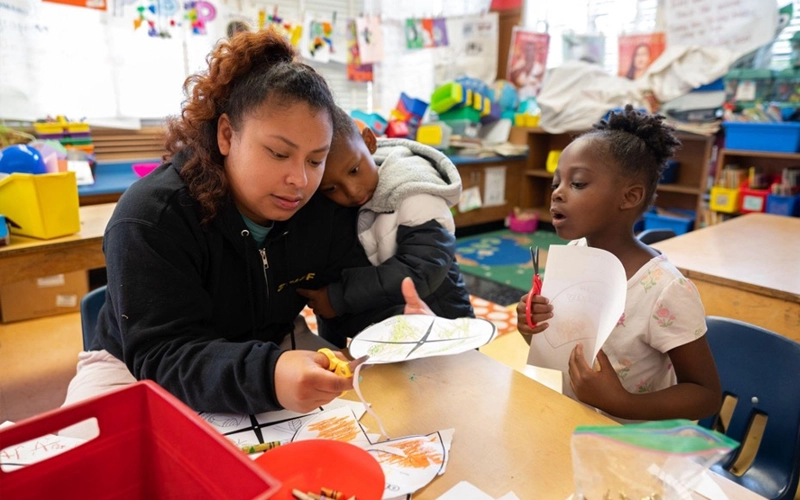

Componenti chiave della pratica appropriata allo sviluppo
Le basi del DAP: elementi essenziali
In sostanza, questo approccio si concentra sulla creazione di ambienti di apprendimento che supportino la crescita dei bambini in un modo che sia appropriato alla loro età e al loro stadio di sviluppo. Piuttosto che su un rigido insegnamento accademico, si concentra su esperienze pratiche, interazioni sociali e attività significative.
Un ambiente di apprendimento ben progettato include:
- Esplorazione attiva – I bambini imparano meglio quando interagiscono con i materiali, pongono domande e scoprono le risposte in modo autonomo.
- Relazioni di supporto – Gli insegnanti svolgono il ruolo di guide, incoraggiando e consentendo ai bambini di prendere l’iniziativa nell’apprendimento.
- Metodi di insegnamento flessibili – Le lezioni dovrebbero essere adattabili in base ai progressi e agli interessi dei bambini.
Questi elementi essenziali contribuiscono a creare un'atmosfera in classe in cui i bambini si sentano a loro agio, coinvolti e motivati ad apprendere.
Come le decisioni educative influenzano il DAP
Ogni scelta fatta da un educatore, dalla selezione dei materiali alla definizione degli obiettivi di apprendimento, influisce sull'efficacia dell'esperienza di apprendimento. Le decisioni dovrebbero basarsi sulla preparazione evolutiva dei bambini, piuttosto che su pressioni esterne o aspettative standardizzate.
Alcuni fattori chiave che influenzano il processo decisionale includono:
- Ricerca sullo sviluppo infantile – Capire come i bambini crescono e imparano aiuta gli insegnanti a pianificare attività appropriate.
- Stili di apprendimento individuali – Riconoscere che ogni bambino ha punti di forza e difficoltà unici consente un insegnamento più personalizzato.
- Influenze culturali e familiari – Il background di un bambino gioca un ruolo significativo nel plasmare la sua esperienza di apprendimento e le classi dovrebbero includere prospettive diverse.
Prendendo decisioni educative ponderate, gli insegnanti possono garantire che i bambini ricevano un'istruzione che soddisfi le loro esigenze e stimoli la curiosità e la crescita.
DAP nei programmi per la prima infanzia
Nei contesti della prima infanzia, questa pratica influenza tutto, dalla progettazione dell'aula alle routine quotidiane. Gli insegnanti integrano attività adatte all'età che promuovono il pensiero critico, la creatività e le abilità sociali.
Esempi di approcci pratici negli ambienti di apprendimento precoce includono:
- Imparare giocando – Le opportunità di gioco strutturate e non strutturate aiutano i bambini a sviluppare capacità di problem solving e di collaborazione.
- Apprendimento integrato – Materie come matematica, lingue e scienze vengono insegnate attraverso esperienze interattive piuttosto che tramite lezioni isolate.
- Valutazione basata sull'osservazione – Invece di basarsi esclusivamente sui test, gli insegnanti osservano le interazioni e i progressi dei bambini per orientare l'insegnamento.
Questo approccio, se applicato in modo efficace, garantisce che i bambini imparino e sviluppino un amore duraturo per l'esplorazione e la scoperta.
Non limitarti a sognarlo, progettalo! Parleremo delle tue esigenze di arredamento personalizzato!
Applicazione del DAP in diverse fasce d'età
DAP per neonati: approcci appropriati all'età
Per i neonati, l'apprendimento avviene attraverso esperienze sensoriali, movimento e interazioni con chi si prende cura di loro. In questa fase, un'assistenza attenta e reattiva è essenziale. Educatori e genitori dovrebbero concentrarsi su:
- Creazione di allegati sicuri – Tenere in braccio i neonati, confortarli e rispondere ai loro bisogni aiuta a sviluppare fiducia e sicurezza emotiva.
- Incoraggiare l'esplorazione – Offrire un ambiente sicuro con diverse texture, suoni e oggetti stimola la curiosità e lo sviluppo sensoriale.
- Sviluppo delle capacità comunicative – Parlare, cantare e stabilire un contatto visivo favoriscono lo sviluppo precoce del linguaggio.
A questa età, le routine devono essere coerenti ma flessibili, per consentire ai bambini di sentirsi al sicuro mentre esplorano l'ambiente circostante.
DAP nell'educazione prescolare
Durante gli anni prescolari, i bambini diventano più indipendenti e desiderosi di esplorare. L'apprendimento dovrebbe essere pratico e incoraggiare lo sviluppo sociale, cognitivo e fisico. Strategie efficaci includono:
- Apprendimento basato sul gioco – Attività come il gioco di finzione, le costruzioni e la narrazione creativa migliorano la capacità di problem solving e la creatività.
- Introduzione all'apprendimento strutturato – Brevi attività di gruppo come il circle time introducono delle routine, consentendo al contempo flessibilità per le esigenze individuali.
- Sviluppo delle capacità motorie fini e grossolane – Attività pratiche come tagliare con le forbici, disegnare e giocare all’aria aperta favoriscono lo sviluppo muscolare.
Le aule prescolari dovrebbero bilancia struttura e gioco libero, consentendo ai bambini di sviluppare competenze fondamentali in modo naturale e coinvolgente.
DAP si concentra sui bambini dell'asilo
All'asilo, i bambini sono pronti per un apprendimento più strutturato, ma necessitano comunque di un approccio adeguato al loro sviluppo che favorisca la curiosità. Le aree di interesse principali includono:
- Alfabetizzazione e calcolo precoci – La narrazione, i giochi in rima e le attività matematiche pratiche aiutano a sviluppare competenze di base.
- Collaborazione e lavoro di squadra – I progetti di gruppo e le interazioni tra pari sviluppano capacità sociali e comunicative.
- Incoraggiare l'indipendenza – Offrire delle scelte nelle attività aiuta i bambini ad acquisire sicurezza nel processo decisionale.
Sebbene le competenze accademiche diventino più importanti, l'apprendimento dovrebbe restare interattivo e coinvolgente, assicurando che i bambini rimangano motivati ed entusiasti della scuola.
DAP per bambini in età prescolare e studenti della prima infanzia
Per i bambini più grandi in età prescolare e per i bambini che imparano presto, le attività di apprendimento dovrebbero stimolarli in modo adeguato, rispettando il loro stadio di sviluppo. Questo include:
- Apprendimento basato su progetti – Attività più lunghe che incoraggiano una riflessione più profonda e la risoluzione dei problemi.
- Ampliare l'apprendimento socio-emotivo – Insegnare l’autoregolamentazione, l’empatia e la risoluzione dei conflitti attraverso discussioni guidate e giochi di ruolo.
- Incoraggiare la curiosità e il fare domande – Consentire ai bambini di porre domande ed esplorare le risposte attraverso attività pratiche.
In questa fase, i bambini traggono beneficio da un ambiente strutturato ma flessibile che nutre la loro naturale curiosità, preparandoli al contempo a esperienze di apprendimento più avanzate.
| Fascia d'età | Caratteristiche di apprendimento | Strategie di insegnamento efficaci |
|---|---|---|
| Neonati (0-12 mesi) | Imparare attraverso l'esplorazione sensoriale, rispondere alle voci familiari e sviluppare la fiducia attraverso l'interazione con chi si prende cura del bambino. | Fornire un'assistenza attenta e reattiva, utilizzare un tocco delicato e voci rilassanti e proporre esperienze sensoriali sicure come giocattoli morbidi e musica. |
| Bambini (1-3 anni) | Inizia a camminare, parlare ed esplorare in modo indipendente, mostra una forte curiosità e si dedica al gioco parallelo (gioca accanto ai coetanei, ma non con loro). | Incoraggiate l'esplorazione pratica, introducete parole e canzoni semplici e offrite spazi sicuri per il movimento e la scoperta. |
| Bambini in età prescolare (3-5 anni) | Sviluppare abilità sociali, impegnarsi in giochi di fantasia e iniziare a risolvere problemi di base. | Utilizzare l'apprendimento basato sul gioco, favorire le interazioni tra coetanei e introdurre le prime nozioni di lettura, scrittura e calcolo attraverso la narrazione e i giochi. |
| Bambini dell'asilo (5-6 anni) | Inizia un apprendimento strutturato, dimostra maggiore indipendenza e affina le capacità motorie fini. | Inizia a camminare, parlare ed esplorare in modo indipendente, mostra una forte curiosità e si dedica al gioco parallelo (gioca accanto ai coetanei, ma non con loro). |


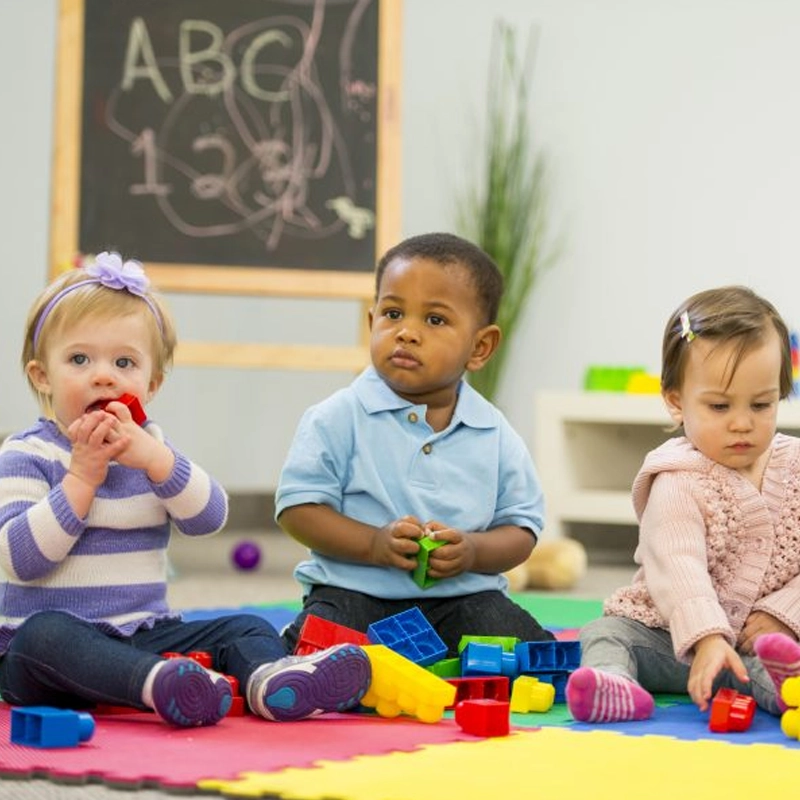
Implementazione del DAP in classe
Creare un'aula che si allinei a pratiche appropriate per lo sviluppo richiede un approccio ponderato. Gli educatori devono progettare esperienze di apprendimento che supportino la naturale curiosità dei bambini, le loro capacità di problem-solving e la loro crescita socio-emotiva. Questa sezione esplora strategie efficaci, esempi pratici, applicazioni specifiche per materia e il ruolo del gioco nel promuovere esperienze di apprendimento significative.
Come utilizzare le strategie DAP in classe
Un'implementazione efficace richiede metodi di insegnamento mirati, che si adattino ai bisogni e alle capacità dei bambini. Alcune strategie chiave includono:
Istruzione individualizzata—Gli insegnanti dovrebbero adattare le lezioni in base ai punti di forza e alle difficoltà degli studenti, riconoscendo che i bambini crescono a ritmi diversi.
Ambienti di apprendimento attivo – Le aule dovrebbero incoraggiare l’esplorazione pratica, le discussioni interattive e l’apprendimento basato sul movimento piuttosto che l’ascolto passivo.
Pianificazione flessibile delle lezioni – Gli insegnanti dovrebbero osservare i progressi dei bambini e adattare i piani delle lezioni invece di seguire rigorosamente un curriculum rigido.
Incoraggiare l'apprendimento guidato dai bambini – Gli insegnanti dovrebbero fornire opportunità di esplorazione aperta e di risoluzione dei problemi invece di dirigere ogni attività.
Costruire relazioni positive – Un forte legame tra insegnante e bambino crea un senso di sicurezza, consentendo ai bambini di assumersi dei rischi nell’apprendimento e di esprimersi con sicurezza.
Esempi e attività per l'implementazione del DAP
Nell'implementazione di pratiche appropriate allo sviluppo, è fondamentale utilizzare attività che siano adatte all'età, agli interessi e allo stadio di sviluppo dei bambini. Di seguito è riportata una tabella dettagliata che illustra le attività di apprendimento pratico per diverse fasce d'età, concentrandosi sullo sviluppo cognitivo, socio-emotivo, linguistico e motorio.
| Fascia d'età | Attività di sviluppo cognitivo | Attività di apprendimento socio-emotivo | Attività di lingua e alfabetizzazione | Attività per lo sviluppo delle abilità motorie |
|---|---|---|---|---|
| Neonati (0-12 mesi) | Gioco del cucù per sviluppare la permanenza dell'oggetto, giocattoli causa-effetto (sonagli, blocchi morbidi) | Delicati giochi di specchiamento, che rispondono ai versi e alle espressioni facciali del bambino | Cantare ninne nanne e parlare durante le routine quotidiane per sviluppare una comunicazione precoce | Tempo a pancia in giù, raggiungere oggetti, afferrare giocattoli |
| Bambini (1-3 anni) | Ordinare i giocattoli per colore e forma, semplice gioco di puzzle | Gioco imitativo (fingere telefonate, dare da mangiare a una bambola) | Libri illustrati con frasi ripetitive, filastrocche | Impilare blocchi, scarabocchiare con i pastelli, correre e arrampicarsi |
| Bambini in età prescolare (3-5 anni) | Semplici giochi da tavolo, attività di conteggio di base utilizzando oggetti reali | Scenari di gioco di ruolo (medico, chef, insegnante) per costruire empatia e cooperazione | Raccontare storie con i burattini, introdurre i suoni delle lettere attraverso le canzoni | Tagliare con forbici adatte ai bambini, infilare perline, saltare e saltare |
| Bambini dell'asilo (5-6 anni) | Esperimenti scientifici di base (coltivazione di piante, miscelazione di colori), semplici attività di risoluzione di problemi | Progetti di gruppo, imparare a fare a turno e a condividere | Caccia al tesoro con parole a vista, diario con immagini e parole | Cantare ninne nanne e parlare durante le routine quotidiane per sviluppare una comunicazione precoce |
Punti chiave per l'implementazione delle attività
- Rendi l'apprendimento interattivo – I bambini piccoli imparano meglio attraverso attività pratiche piuttosto che attraverso l’istruzione passiva.
- Incoraggiare le interazioni sociali – Le attività dovrebbero includere opportunità di gioco cooperativo, apprendimento tra pari e rispetto dei turni.
- Adattarsi in base alle esigenze individuali – Alcuni bambini preferiscono compiti tranquilli e concentrati, mentre altri prosperano in apprendimento attivo basato sul movimento.
- Equilibrio tra struttura e flessibilità – Sebbene avere un piano sia essenziale, gli educatori dovrebbero adattare le attività in base al coinvolgimento e agli interessi dei bambini.
La tua classe perfetta è a un clic di distanza!
DAP in Lingua, Alfabetizzazione e Calcolo
L'alfabetizzazione e la capacità di calcolo in età precoce dovrebbero essere insegnate attraverso esperienze coinvolgenti e concrete, anziché attraverso esercizi e schede di lavoro.
Strategie linguistiche e di alfabetizzazione
Letture ad alta voce interattive – Gli insegnanti dovrebbero porre domande aperte, incoraggiare le previsioni e lasciare che i bambini raccontino la storia.
Apprendimento conversazionale – Le conversazioni quotidiane, la narrazione e il canto aiutano ad ampliare il vocabolario e la comprensione.
Attività di pre-scrittura – Disegnare, scarabocchiare e tracciare lettere in sabbia o schiuma da barba sostenere le capacità motorie fini prima di iniziare la scrittura formale.
Strategie di calcolo
Il conteggio nei contesti quotidiani – Utilizzare oggetti reali come frutta, blocchi o dita per insegnare a contare in modo naturale.
Giochi di matematica pratici – Attività come ordinare le forme, misurare con le tazze o giocare a giochi da tavolo rafforzano le competenze matematiche di base.
Attività di problem-solving – Incoraggiare i bambini a raggruppare oggetti, identificare schemi e risolvere semplici enigmi favorisce il pensiero logico precoce.
I bambini acquisiscono queste competenze fondamentali in modo naturale e piacevole, integrando le capacità di lettura e scrittura e di calcolo nelle esperienze di vita reale.
Il ruolo del gioco nel DAP e nell'educazione della prima infanzia
Il gioco è uno degli aspetti più critici di una pratica appropriata allo sviluppo, perché incoraggia l'esplorazione, la risoluzione dei problemi e la creatività. L'apprendimento basato sul gioco è suddiviso in diverse tipologie, ognuna delle quali persegue uno scopo evolutivo specifico:
Gioco drammatico – Attività come fingere di fare la spesa, giocare a fare casa o recitare ruoli nella comunità aiutano i bambini a sviluppare abilità sociali ed empatia.
Gioco costruttivo – Costruire con i mattoncini, fare arte o assemblare puzzle favorisce la risoluzione dei problemi e la coordinazione motoria fine.
Gioco esplorativo – I giochi con l’acqua, le passeggiate nella natura e gli esperimenti scientifici stimolano la curiosità e l’apprendimento pratico.
Gioco fisico – Saltare, correre, arrampicarsi e ballare migliorano le capacità motorie grossolane e la salute fisica generale.
Un'aula ben strutturata dovrebbe offrire opportunità per diversi tipi di gioco, garantendo al contempo che i bambini si sentano liberi di sperimentare, correre rischi ed esprimersi in modo creativo.
Quale pratica NON è appropriata allo sviluppo?
Capire cosa non è una pratica appropriata per lo sviluppo è importante quanto sapere cosa lo è. Ecco alcuni errori comuni che non sono in linea con le migliori pratiche:
- Aspettarsi che tutti i bambini imparino allo stesso ritmo – Ogni bambino cresce in modo unico e spingerlo troppo velocemente può causare frustrazione e ansia.
- Eccessiva dipendenza dai fogli di lavoro e dalla memorizzazione meccanica – L’apprendimento dovrebbe essere interattivo e significativo, non solo una ripetizione di informazioni.
- Istruzioni rigide, guidate dall'insegnante e senza flessibilità – Le lezioni dovrebbero consentire l'esplorazione e l'adattamento in base agli interessi e alle esigenze dei bambini.
- Mancanza di movimento e gioco – Stare seduti per lunghi periodi senza svolgere attività pratiche contrasta con il modo in cui i bambini imparano naturalmente.
- Ignorare lo sviluppo socio-emotivo dei bambini – La capacità di un bambino di gestire le emozioni, costruire relazioni ed esprimere pensieri è importante tanto quanto l'apprendimento accademico.
Una classe che dà priorità all'insegnamento rigido rispetto all'esplorazione e alla creatività non segue principi adeguati allo sviluppo e potrebbe ostacolare anziché supportare la crescita dei bambini.
Creare un'aula adeguata allo sviluppo richiede pianificazione, flessibilità e una profonda comprensione di come i bambini apprendono meglio. Gli insegnanti che osservano, ascoltano e si adattano ai loro studenti possono creare un ambiente in cui l'apprendimento risulta coinvolgente, stimolante e significativo.
Utilizzando strategie didattiche incentrate sul bambino, integrando l'apprendimento basato sul gioco e dando priorità alle esperienze del mondo reale, gli educatori possono promuovere uno spazio in cui i bambini sviluppano sicurezza, indipendenza e un amore per l'apprendimento che duri tutta la vita.
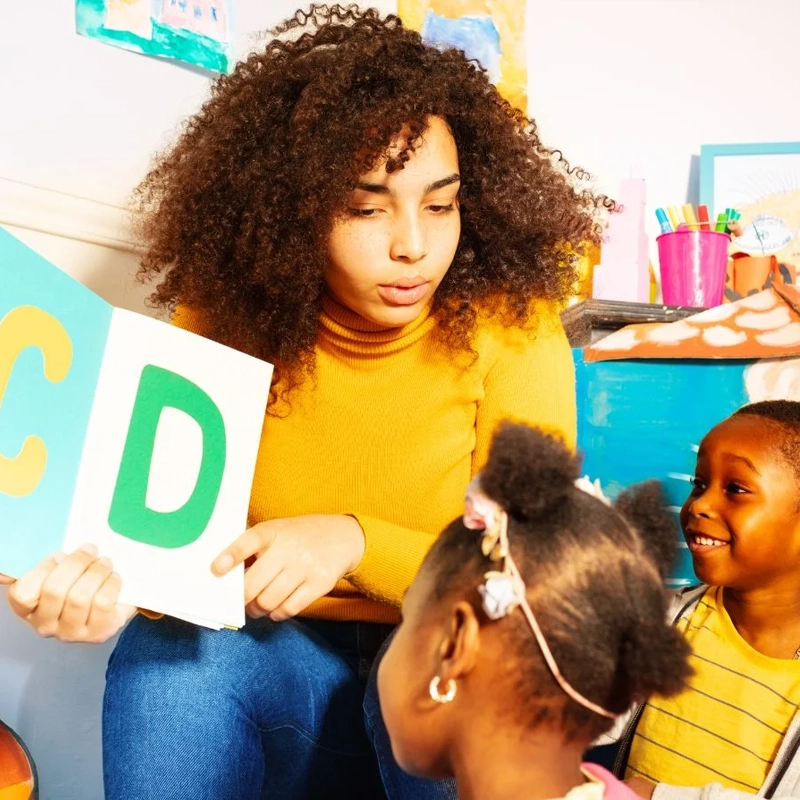
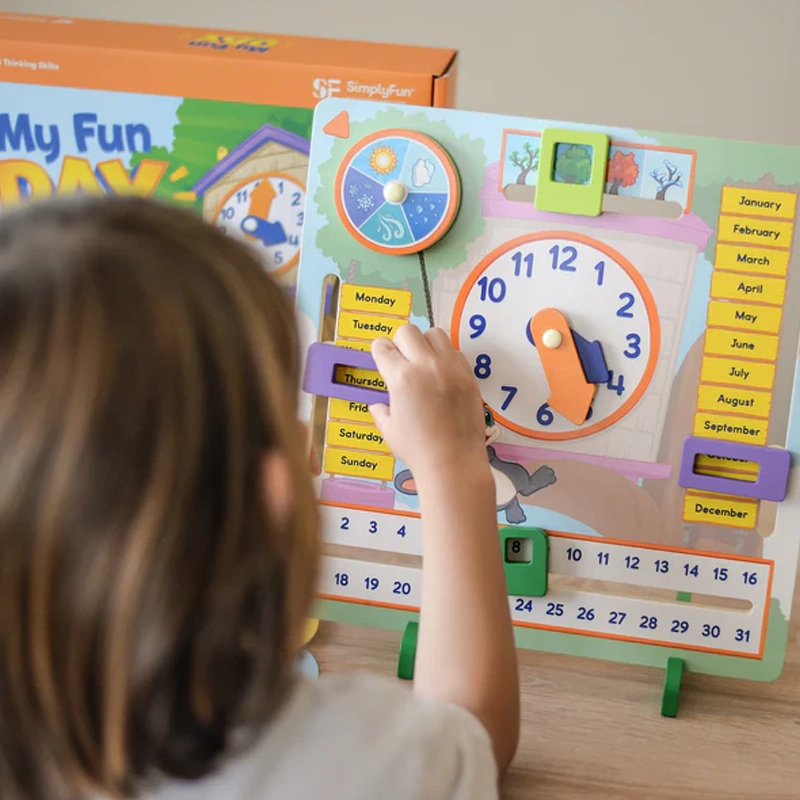
Benefici e impatto di pratiche appropriate allo sviluppo
Come il DAP supporta lo sviluppo dei bambini
Le Pratiche Appropriate allo Sviluppo (DAP) sono progettate per aiutare i bambini ad apprendere e crescere in modo adeguato al loro stadio di sviluppo. Se implementate correttamente, offrono benefici in molteplici ambiti:
Sviluppo cognitivo
- Incoraggia il pensiero critico e la risoluzione dei problemi attraverso esperienze pratiche anziché tramite la memorizzazione.
- Promuove la curiosità e l'esplorazione, consentendo ai bambini di impegnarsi profondamente con materiali didattici.
- Aiuta a sviluppare in modo naturale le prime capacità di lettura e scrittura e di calcolo attraverso interazioni significative.
Crescita sociale ed emotiva
- Supporta l'autoregolazione, aiutando i bambini a comprendere e gestire le proprie emozioni.
- Incoraggia il gioco cooperativo e il lavoro di squadra, migliorando le interazioni sociali.
- Rafforza la sicurezza e l'indipendenza, consentendo ai bambini di prendere iniziative nell'apprendimento.
Sviluppo fisico
- Incorpora attività motorie fini (tagliare, disegnare e incollare perline) per migliorare la coordinazione occhio-mano.
- Stimola lo sviluppo delle capacità motorie grossolane attraverso l'apprendimento basato sul movimento e il gioco all'aria aperta.
- Promuove abitudini sane integrando movimento e gioco attivo nelle routine quotidiane.
Affrontando tutti questi aspetti dello sviluppo, il DAP garantisce che i bambini ricevano un'istruzione completa che li prepari all'apprendimento permanente.
Principali vantaggi di una pratica appropriata allo sviluppo
Esperienza di apprendimento personalizzata
Il DAP permette ai bambini di progredire al proprio ritmo, garantendo che non vengano né affrettati né frenati nel loro percorso di apprendimento. Invece di un approccio standardizzato, gli insegnanti possono adattare le lezioni in base ai punti di forza e alle esigenze individuali.
Relazioni più forti tra insegnanti e studenti
Quando gli insegnanti seguono pratiche appropriate allo sviluppo, si concentrano sulla comprensione della personalità, degli interessi e delle difficoltà uniche di ogni bambino. Questo contribuisce a costruire fiducia e interazioni positive, facendo sì che i bambini si sentano al sicuro e supportati in classe.
Maggiore motivazione e coinvolgimento
I bambini sono più coinvolti ed entusiasti di imparare quando le attività corrispondono alla loro naturale curiosità. Le aule DAP sono ricche di attività interattive e basate sul gioco, rendendo l'apprendimento piacevole anziché stressante.
Migliori risultati accademici a lungo termine
La ricerca ha dimostrato che i bambini che ricevono un insegnamento adeguato al loro sviluppo nei primi anni di vita ottengono risultati migliori nella scuola successiva. Sviluppano solide basi nella risoluzione dei problemi, nell'alfabetizzazione e nelle competenze socio-emotive, fondamentali per il successo scolastico.
Perché è importante implementare il DAP
Molti modelli educativi tradizionali privilegiano un insegnamento accademico rigido, focalizzandosi principalmente sulla memorizzazione e sui test standardizzati. Tuttavia, questo approccio non è in linea con il modo in cui i bambini imparano naturalmente.
L'implementazione di pratiche appropriate allo sviluppo garantisce che:
- I bambini non vengono sopraffatti da aspettative irrealistiche, riducendo lo stress e l'ansia nel processo di apprendimento.
- Gli educatori possono fornire un insegnamento di alta qualità utilizzando metodi didattici allineati alla ricerca sullo sviluppo infantile.
- Genitori e insegnanti possono collaborare, favorendo un ambiente in cui l'apprendimento continua anche oltre l'aula.
Utilizzando i principi DAP, insegnanti e tutori coltivano l'amore per l'apprendimento, aiutando i bambini a diventare individui sicuri di sé, curiosi e capaci.
Collaborazione e futuro della pratica appropriata allo sviluppo
Collaborare con le famiglie per implementare il DAP
L'esperienza di apprendimento di un bambino non si ferma a scuola, ma si estende anche all'ambiente domestico. Una solida collaborazione tra educatori e famiglie garantisce la coerenza nello sviluppo del bambino e rafforza le esperienze di apprendimento chiave in classe e a casa.
Modi per rafforzare la partnership tra famiglie e insegnanti
- Comunicazione regolare – Gli insegnanti dovrebbero condividere gli aggiornamenti sui progressi dei bambini attraverso incontri genitori-insegnanti, newsletter e resoconti giornalieri.
- Workshop e formazione – Le scuole possono organizzare delle sessioni per aiutare i genitori a comprendere come supportare a casa un apprendimento adeguato allo sviluppo.
- Coinvolgere le famiglie nell'apprendimento—Per integrare l'istruzione in classe, i genitori possono impegnarsi in attività come la lettura insieme, la narrazione di storie, il gioco creativo e giochi di apprendimento strutturati.
- Rispettare le differenze culturali—Le famiglie hanno tradizioni e valori diversi. Gli educatori dovrebbero collaborare con i genitori per integrare strategie di apprendimento culturalmente attente.
Creare una forte relazione insegnante-genitore offre ai bambini una guida e un supporto costanti, che consentano loro di sviluppare competenze essenziali in contesti strutturati e informali.
Comprensione e applicazione del DAP come educatore
L'utilizzo efficace di pratiche appropriate allo sviluppo richiede un apprendimento continuo e un'auto-riflessione da parte degli educatori. devono tenersi informati sulla ricerca sullo sviluppo infantile e adattare il loro insegnamento alle esigenze dei bambini.
| Sfide comuni | Soluzioni basate su DAP |
|---|---|
| Pressione per raggiungere i parametri accademici | Concentrarsi sull'apprendimento incentrato sul bambino, combinando il gioco con lezioni strutturate |
| Gestire le diverse esigenze di apprendimento | Utilizzare strategie di insegnamento flessibili e istruzioni individualizzate |
| Mancanza di risorse per attività pratiche | Utilizzare oggetti di uso quotidiano e materiali naturali per l'apprendimento interattivo |
| Coinvolgimento limitato dei genitori | Costruire canali di comunicazione casa-scuola efficaci per coinvolgere le famiglie |
Suggerimento per gli insegnanti: Invece di rigidi piani di lezione, create esperienze di apprendimento flessibili che si adattino in base alla curiosità e al coinvolgimento dei bambini.
Comprendendo come applicare efficacemente il DAP, gli insegnanti creano classi dinamiche, inclusive e reattive per giovani studenti.
Tendenze e innovazioni future nel DAP
Con l'evoluzione dell'istruzione, le pratiche appropriate allo sviluppo devono adattarsi alle nuove ricerche, ai progressi tecnologici e ai cambiamenti sociali. L'integrazione della tecnologia nell'apprendimento rappresenta uno dei cambiamenti più significativi nell'educazione della prima infanzia. Strumenti digitali, come app interattive per la narrazione, libri in realtà aumentata e giochi di coding per i più piccoli, rimodellano il modo in cui i bambini interagiscono con le informazioni. Se utilizzata in modo appropriato, la tecnologia può favorire l'esplorazione e la creatività anziché sostituire l'apprendimento tradizionale basato sul gioco.
Un'altra tendenza emergente è la crescente enfasi sull'apprendimento all'aperto e in natura. Studi hanno dimostrato che le attività all'aperto supportano lo sviluppo cognitivo, le capacità di problem solving e il benessere emotivo. Sempre più programmi per la prima infanzia includono giardinaggio, passeggiate nella natura e giochi sensoriali all'aperto, passando dalle attività basate sullo schermo all'esplorazione pratica. Questo approccio è in linea con i principi del DAP (Digital Learning Approach) consentendo ai bambini di interagire con l'ambiente circostante in modo significativo e appropriato per il loro sviluppo.
Oltre ai cambiamenti tecnologici e ambientali, l'educazione della prima infanzia si è sempre più concentrata sull'apprendimento socio-emotivo (SELn). Le scuole riconoscono che insegnare ai bambini come gestire le emozioni, costruire relazioni e sviluppare capacità di autoregolamentazione è importante tanto quanto l'apprendimento accademico. Esercizi di consapevolezza, gioco cooperativo e narrazione basata sulle emozioni stanno diventando pratiche standard in molte classi per aiutare i bambini a sviluppare resilienza ed empatia.
Infine, l'insegnamento culturalmente reattivo sta plasmando il futuro del DAP. Nel mondo eterogeneo di oggi, gli educatori stanno integrando l'apprendimento multilingue, libri inclusivi e narrazioni culturalmente rilevanti per garantire che tutti i bambini si sentano rappresentati nel loro percorso educativo. Accogliendo prospettive diverse, gli insegnanti creano classi in cui il background di ogni bambino è riconosciuto e valorizzato.
Con l'evoluzione dell'educazione della prima infanzia, il DAP rimane un quadro guida, adattandosi alle nuove conoscenze pur rimanendo fedele ai suoi principi fondamentali: rispettare i bisogni di sviluppo dei bambini, supportare la crescita olistica e creare esperienze di apprendimento significative. Il futuro del DAP è dinamico e, abbracciando l'innovazione pur mantenendo approcci incentrati sul bambino, gli educatori possono continuare a coltivare studenti sicuri di sé, curiosi e capaci.

Le pratiche appropriate allo sviluppo (DAP) sono più di un semplice approccio didattico: sono un impegno nel comprendere come i bambini apprendono meglio e nel creare ambienti che supportino il loro sviluppo naturale. Gli educatori possono fornire un'istruzione significativa che incontri i bambini dove si trovano concentrandosi su esperienze di apprendimento appropriate all'età, sulla crescita socio-emotiva e sull'esplorazione pratica..
In questo articolo, abbiamo esplorato i principi, le componenti, le strategie di classe e i benefici a lungo termine del DAP. Abbiamo anche discusso il ruolo delle collaborazioni familiari, l'adattabilità degli insegnanti e le tendenze future che plasmano l'educazione della prima infanzia. Che si tratti della prima infanzia, della scuola materna o dell'asilo, il DAP garantisce un apprendimento coinvolgente, adeguato allo sviluppo e personalizzato in base alle esigenze specifiche di ogni bambino.
Man mano che l'istruzione continua a evolversi, devono evolversi anche i nostri metodi di insegnamento. Possiamo creare aule che promuovano la fiducia, la creatività e un amore per l’apprendimento che duri tutta la vita, abbracciando flessibilità, inclusione culturale e pratiche innovative.Il futuro dell'educazione della prima infanzia dipende da approcci che rispettino, nutrano e ispirino le giovani menti, e il DAP rimane uno dei modi più efficaci per raggiungere questo obiettivo.
Educatori e tutori incoraggiano i bambini a esplorare, crescere e avere successo a scuola e nella vita attraverso la comprensione e l'implementazione di pratiche appropriate allo sviluppo.
